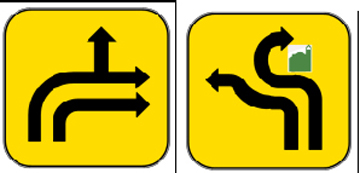By Gerhard Ramsaroop
(This is the fourth part of five on the traffic situation. See part five in tomorrow’s edition)
This is the fourth article in a five-part series offering solutions to problems on our roads. In our previous two articles we offered specific short term suggestions for dealing with the crisis on our roads. We conclude our series here.
35. Tweak the new speed limits introduced in 2009. Raise the limit to 80km/h on roadways such as the EBD Highway from the Ruimveldt Industrial Estate to Houston heading south, from Houston to La Penitence heading north, in Eccles, from Peters Hall to Diamond (both sides), and on several major thoroughfares in and around the city such as Mandela Ave, Homestretch Ave, Vlissengen Rd (Thomas Lands/Kitty area), and Carifesta Ave. Introduce a 65 km/h limit on major arteries. Set separate speed limits for trucks and other heavy vehicles: 65 km/h on the 80 km/h roads and not above 80 km/h on the Soesdyke/Linden Highway.

36. Demarcate two lanes on one-way roads such as Church St, North Rd, South Rd, Croal St, King St, Wellington St and sections of High St (Hadfield to Broad Sts), Manget Place (Brickdam to Croal St), and on Duncan and Garnett Sts (from Sheriff St to Vlissengen Rd). Signs are needed at the bridge connecting Wellington to Croal guiding the left lane to turn into Sendall Pl and the right lane to head west on Croal, and at the corner of King and North Rds with the left lane going west on North Rd and the right lane around the Cathedral.
37. Where space permits, two lanes should also be drawn at traffic lights, especially those with short times, such as when coming out of the Eccles old scheme or at Vlissengen Rd and the Rupert Craig (East Coast) Highway. This would greatly reduce “boring” at those lights.
38. Make the promotion of road safety in schools a much greater priority. Innovative methods, such as inter-school play, poster or radio ad competitions with road safety as the theme, should be used to generate greater interest.
39. Place signs for lower speed limits in school areas such as Supply Primary School which presently is in an 80 km/h zone.
40. Place signposts at minibus stops so vehicles behind can anticipate when minibuses may stop.
41. When construction or repairs shut down major roads, temporary one-ways should be established to get around. For example, when we had the lengthy bridge construction on Saffon St, portions of Ketley, Hogg and James Sts should have been made temporary one-ways. Roads, as best as possible, should be repaired during off-peak hours or at night. Repairs, particularly on busy roads, should be coordinated with traffic ranks. Recently, there was utter chaos on Mandela Ave near John Fernandes/BK which was being repaired during a busy time. Most drivers ignored the hapless workers who tried to direct traffic.
42. Paint all speed bumps with yellow stripes, and place signs.
43. Standardise the height of speed bumps.
44. Introduce headlight luminosity and alignment testing to the fitness inspection programme of vehicles. A policy for the use of aftermarket lights must be adopted and enforced evenly, regardless of the wealth or connections of the vehicle owner.
45. Move the lane going south on Conversation Tree road when coming from the west on the Rupert Craig (East Coast) Highway (diagram A) from going around Conversation Tree to in front of it as shown in diagram B. Since the western side of the road is already wider than the eastern side, this change only requires a repainting of the lanes. This new arrangement will make it easier for all drivers, especially those driving large commercial vehicles.
46. Recalibrate the traffic lights on the Rupert Craig (East Coast) Highway to give a longer yellow (amber). As is, the time is so short that at the speed limit of 80 km/h, drivers have to brake rashly so as not to go through the red light.
47. The distance, by law, to park from a corner is 30 feet. Today it is no longer practicable in Georgetown and the required distance should be reduced to 18 feet, which is roughly 5 feet more than an average car length. The distance should also be marked at all corners and enforced.
48. The authorities should hold periodic awareness programmes with large companies that have many drivers and with government ministries and agencies as well.
49. Prominently announce when streets are changed to one-ways or when they revert back to two-way streets in the national media (television, radio, facebook and twitter), also using GT&T’s and Digicel’s text messaging service, and on the Ministry of Home Affairs website. Announcements should be made, too, using these various media, when streets are closed (and the estimated duration of closure) for repairs or construction. As much as possible, public consultations should also be held when changing the priority or direction of streets.
50. Update the driver’s code (incorporating the points made in this series of articles), make it a free hand-out and also available as a free download from the Ministry of Home Affairs website.
51. Allow private companies to set up cameras and submit the information on offenders to the authorities. This service can be paid for out of a percentage of the fines paid.
52. Hold periodic brainstorming sessions with stakeholders until there is a reasonable sense of order.


